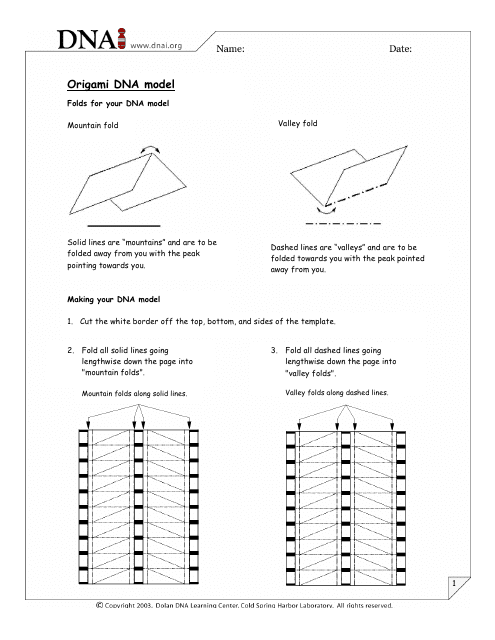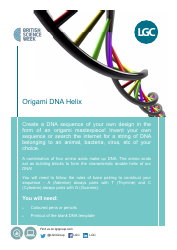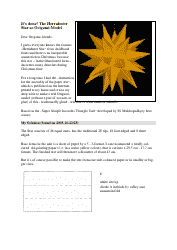Origami Dna Model
The Origami DNA model is a visual, three-dimensional learning tool that educators often use to teach about the double helix structure of DNA in a simplified and interactive manner. It helps in understanding the basic molecular structure, base pairing rules, and the nature of genetic coding of DNA. It's often a project in biology classes, used to facilitate comprehension on how DNA folds, and the purpose and importance of its unique structure. It can also provide a foundational understanding for more advanced topics in genetics and molecular biology.
The Origami DNA model can be filed or created by biology students, researchers, or educators who are demonstrating the double-helix structure of DNA. There isn't a specific entity or country that files it. The origami DNA model is a hands-on method used worldwide in educational settings to explain the fundamental structure and function of DNA in a visually engaging way.
FAQ
Q: What is an origami DNA model?
A: An origami DNA model is a visual, hands-on tool commonly used in classrooms to understand the structure and function of DNA. Made from paper folded in a certain way, it recreates the double helix structure of DNA, making it easier to understand the concept.
Q: How is origami used to represent DNA?
A: Origami, the art of paper folding, is used to make a 3D model of the DNA structure. The paper is folded into paired rectangles or squares to represent the base pairs of DNA, and the double helix formation is made to demonstrate how those pairs interact.
Q: Why is an origami DNA model useful?
A: An origami DNA model is useful because it provides a tangible and visual way of understanding the complicated structure of DNA. It aids in grasping the complex ideas of genetics and molecular biology. Moreover, building the model helps in better retention of the concept.
Q: Is it difficult to build an origami DNA model?
A: The difficulty level of building an origami DNA model can vary with the complexity of the model. Basic models that demonstrate the double helix structure of DNA and the principle of base pairing can be relatively simple and suitable for beginners, whereas more complex models might require advanced origami skills.
Q: What materials are needed to make an origami DNA model?
A: An origami DNA model typically requires sheets of paper (preferably in different colors to distinguish between different base pairs), scissors, a ruler, and sometimes glue or tape to secure the base pairs. Some people also use markers to label the base pairs on their model.














